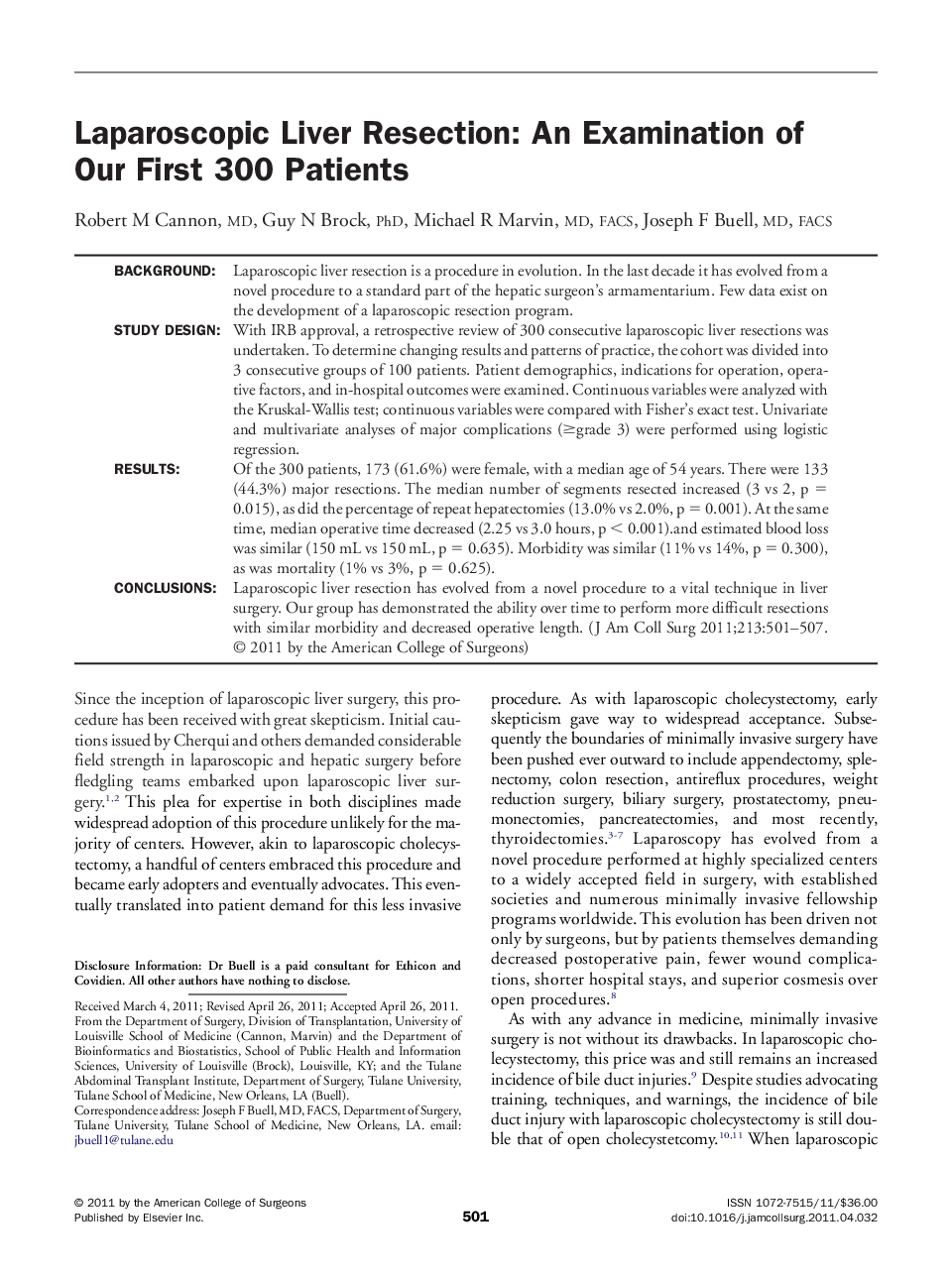| Article ID | Journal | Published Year | Pages | File Type |
|---|---|---|---|---|
| 4294040 | Journal of the American College of Surgeons | 2011 | 7 Pages |
BackgroundLaparoscopic liver resection is a procedure in evolution. In the last decade it has evolved from a novel procedure to a standard part of the hepatic surgeon's armamentarium. Few data exist on the development of a laparoscopic resection program.Study DesignWith IRB approval, a retrospective review of 300 consecutive laparoscopic liver resections was undertaken. To determine changing results and patterns of practice, the cohort was divided into 3 consecutive groups of 100 patients. Patient demographics, indications for operation, operative factors, and in-hospital outcomes were examined. Continuous variables were analyzed with the Kruskal-Wallis test; continuous variables were compared with Fisher's exact test. Univariate and multivariate analyses of major complications (≥grade 3) were performed using logistic regression.ResultsOf the 300 patients, 173 (61.6%) were female, with a median age of 54 years. There were 133 (44.3%) major resections. The median number of segments resected increased (3 vs 2, p = 0.015), as did the percentage of repeat hepatectomies (13.0% vs 2.0%, p = 0.001). At the same time, median operative time decreased (2.25 vs 3.0 hours, p < 0.001).and estimated blood loss was similar (150 mL vs 150 mL, p = 0.635). Morbidity was similar (11% vs 14%, p = 0.300), as was mortality (1% vs 3%, p = 0.625).ConclusionsLaparoscopic liver resection has evolved from a novel procedure to a vital technique in liver surgery. Our group has demonstrated the ability over time to perform more difficult resections with similar morbidity and decreased operative length.
